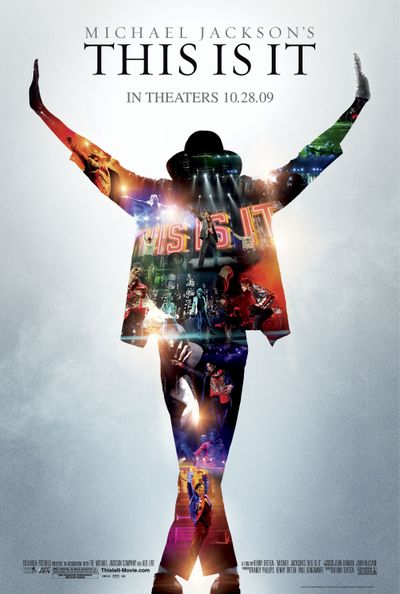King of Pop’s last work
Film offers look at Michael Jackson’s taped rehearsals

Kenny Ortega was responsible for some of Michael Jackson’s biggest concerts, including what were planned to be his comeback shows in London.
But in the singer’s final days before his June 25 death, the producer-director-choregrapher felt like he needed to take on another responsibility: making sure Jackson stayed healthy.
“Michael had sleepless nights and we had to look after him,” Ortega said in an interview to promote the new Jackson documentary, “This Is It,” opening in theaters today.
“(I’d say to him), ‘Stay hydrated, have a protein shake – Did you eat today before you came?’ ”
When Jackson would say he had, a skeptical Ortega would say, “Michael?”
“Michael’s an adult. … We didn’t want to baby him,” he said. “(But) I had concerns and we had conversations, wanting to make sure he was doing everything he could to build himself and not break himself down.”
The Los Angeles County coroner has ruled Jackson’s death a homicide, caused primarily by the powerful anesthetic propofol and another sedative.
Ortega’s work with Jackson included world tours for the “Dangerous” and “HIStory” albums.
He was directing the “This Is It” shows – which would have marked the performer’s comeback concerts in London’s O2 Arena in July – and was brought on to direct a film adaptation of those taped rehearsals after Jackson’s death.
“This Is It” will run in theaters across the world for two weeks. The soundtrack for the film, which includes the newly released title track as well as some of Jackson’s best-known hits, was released Monday.
In a 12-minute clip previewed for the media last week, a strong-voiced King of Pop is shown enthusiastically practicing some of his biggest hits.
Jackson, though frail-looking, is shown warming up his vocals during a performance of “Human Nature.” That’s followed by the singer running through the song in various outfits.
Later, he playfully dances with a woman as he sings “The Way You Make Me Feel,” touching her thigh and holding her waist.
“One more time,” Jackson says toward the end of the song after being told the last eight bars were to be cut.
Ortega says although he worried about Jackson’s health, he doesn’t believe the preparation for the shows wore the singer down. In fact, he says it was the opposite.
“I can tell you this experience, working on this show, was invigorating, was nourishing. … (It) wasn’t taking away from Michael,” he said.
Travis Payne, a choreographer who worked on “This Is It” and other Jackson tours, says he remembers spending one-on-one time with Jackson – especially visiting Web sites like YouTube.
“I used to love sitting and just surfing the Net with him,” Payne said. “And we would just do that and we would be able to have our creative reference time in a different way now.”
Musical director Michael Bearden recalls Jackson’s lofty goal to try to capture all of his music in one over-the-top show.
“He had so, so much music that we tried to get everything in but not cheat the audience at the same time, which is a delicate balance, if you will, to try to get everything in and still feel like you’re getting a full song,” he said.
Ortega says Jackson was very adamant about the look of the tour, from the length of the songs to the stage’s lighting.
“From the very beginning Michael was very vocal, and very upfront about what he wanted to do and why he wanted to do it,” Ortega said.
“That’s what ‘This Is It’ is about – it’s a privileged peek into the final creative process of Michael’s last theatrical work.”